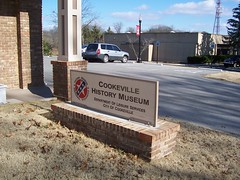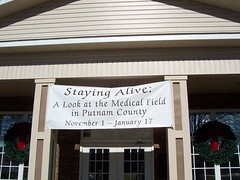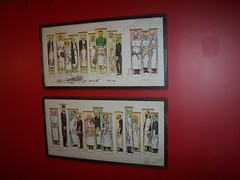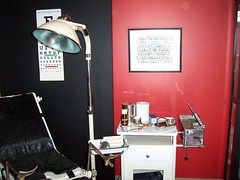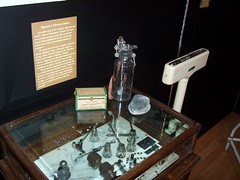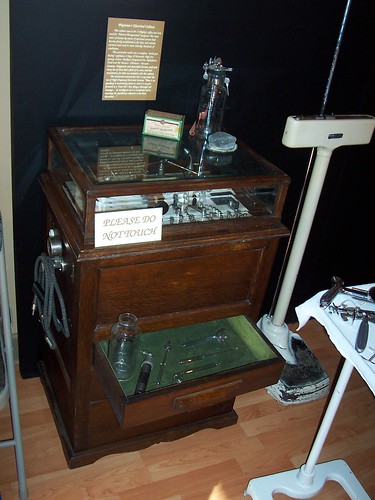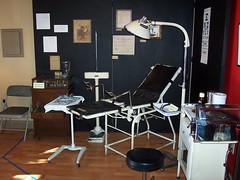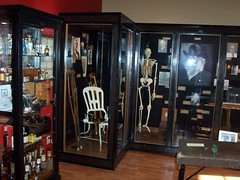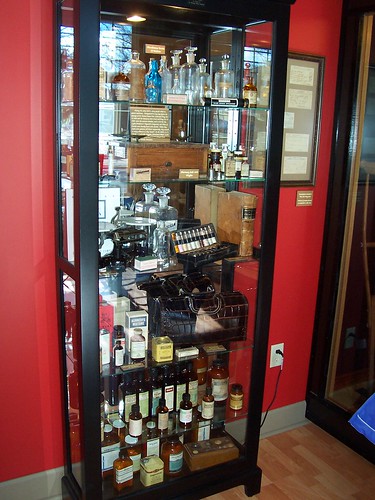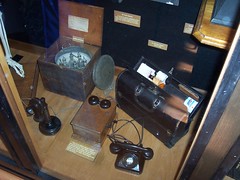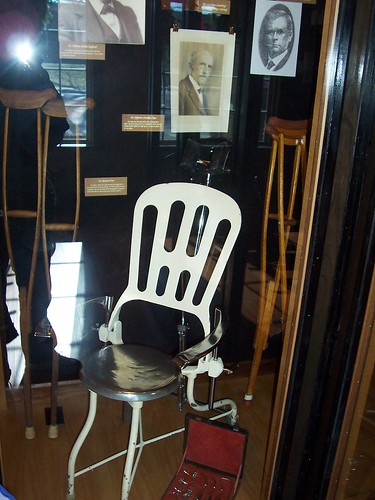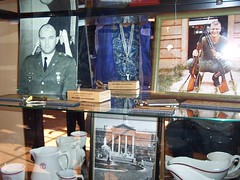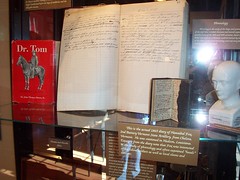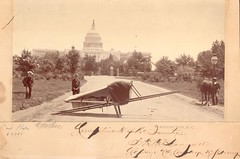I just found out about this opening today, and it closes tomorrow - Mike
NCAN08136638: ARCHIVES TECHNICIAN 12/09/08
AFIP GS-1741-7
NCAN08136638D: ARCHIVES TECHNICIAN 12/09/08
AFIP GS-1741-7
The second is open to the general public while the first is for current government employees.
ALL APPLICANTS WHO WISH TO BE CONSIDERED FOR THE VACANCIES ON THIS LIST MUST APPLY
ONLINE (
http://www.cpol.army.mil ). You can also view additional vacancies at this website. Once on the search
page, you can either search for vacancies by selecting District of Columbia for the “State” search, or enter the following in the Search-Announcement box: NCAN%.
DEPARTMENT OF THE ARMY
Vacancy Announcement Number: NCAN08136638D
Opening Date: November 26, 2008
Closing Date: December 09, 2008
Position:
Archives Technician, GS-1421-7
Salary:
$39,330 - $51,124 Annual
Place of Work:
Armed Forces Institute of Pathology, Office of Director, Collections Division, Washington, DC 20307
Position Status:
This is a Permanent position. -- Full Time
Number of Vacancy: 1
DEPARTMENT OF ARMY RANKED ONE OF THE TOP TEN FEDERAL WORKPLACES FOR 2007!
Duties: Serve as Assistant Archivist for the National Museum of Health and Medicine, responsible for receipt, accessioning, classification, coding, filing, custody, dia-typing 35mm slides, loan and furnishing of medical illustration material.Apply extensive knowledge of medical terminology; photographic processes; subject matter contained in files; and principles of cataloging, filing and use of reference materials. Assist the Archivist with plans for the operation of the division. Determines organization of work which most effectively achieves objectives. Establishes policies for identification, preservation and use of materials.Determines most effective utilization of space.Based on broad experience with and knowledge of medical subject matter in files, carry out extensive searches for and select materials to fill requests. Consider entitlement of requester to photographic materials in accordance with policy and regulations; advises requesters of procedures whereby copies may be purchased.
About the Position: PHYSICAL DEMANDS: Work is mostly sedentary; however, work requires some physical effort for organizing, sorting, moving, and transferring boxes of records. Employee will be required to lift and move boxes weighing up to 40 pounds.
WORK ENVIRONMENT: Work is performed in an office setting.
Who May Apply: (Click on Who May Apply)
· All U. S. citizens and Nationals with allegiance to the United States.
Qualifications: Click on link below to view qualification standard.
General Schedule
· The ideal candidate for this position will have the following knowledge, skills and abilities:
Knowledge of archival principles and practices, theory, and techniques sufficient to plan, implement, and maintain, a nation-wide historical document collection program for the U.S. Army and Armed Forces Institute of Pathology.
A professional knowledge of historical research methodology is used to assist historian and activity directors in planning and conducting historical studies. Ability to analyze data, draw logical conclusions, and present findings.
Knowledge of public and private documents is used to advise and refer requesters to further sources of information in cases where the resources of the Institute are inadequate to ensure complete and accurate response. Knowledge of the existence and location of applicable record information in obscure or unlikely sources is regularly applied.
Knowledge of the Federal Laws and Army regulations governing the creation, organization, use and disposition of official and historical records.
· GS-07: One year of experience directly related to the occupation equivalent to at least the next lower grade level; or 1 full year of graduate level education or superior academic achievement; or equivalent combinations of experience and education.
· The experience described in your resume will be evaluated and screened for the Office of Personnel Management's basic qualifications requirements, and the skills needed to perform the duties of this position as described in this vacancy announcement.
· Applicants who have held a General Schedule (GS) position within the last 52 weeks must meet the Time in Grade Restriction.
· Education can be substituted for experience. Review the qualification requirements for specific information.
· One year of experience in the same or similar work equivalent to at least the next lower grade or level requiring application of the knowledge, skills, and abilities of the position being filled.
· Must have 52 weeks of Federal service at the next lower grade (or equivalent).
· Only degrees from an accredited college or university recognized by the Department of Education are acceptable to meet positive education requirements or to substitute education for experience. For additional information, please go to the Office of Personnel Management (OPM) and U.S. Department of Education websites at - http://www.opm.gov/qualifications and http://www.ed.gov/admins/finaid/accred/index.html
· Demonstrated work experience that equipped the applicant with the particular knowledge, skills, and abilities to successfully perform the duties of the position, and that is typically in or related to the work of the position to be filled.
· The related work experience must have been equivalent in difficulty and complexity to the next lower grade level.
· Foreign education must be evaluated for U.S. equivalency in order to be considered for this position. Please include this information in your resume.
Other Information:(Click on Other Information)
· To successfully claim veteran's preference, your resume/supplemental data must clearly show your entitlement. Please review the information listed under the Other Requirements link on this announcement or review our on-line Job Application Kit.
· The Department of Defense (DoD) policy on employment of annuitants issued March 18, 2004 will be used in determining eligibility of annuitants. The DoD policy is available on http://www.cpms.osd.mil/fas/staffing/pdf/rem_ann.pdf
· Salary includes applicable locality pay or Local Market Supplement.
· Permanent Change of Station (PCS) expenses are not authorized.
· The Base Realignment and Closure (BRAC) Commissions recommendations have been approved. This vacancy exists in an organization that is affected by BRAC.
Other Advantages: All federal agencies in the National Capital Region offer qualified employees a monthly stipend as a transit or vanpool subsidy to help reduce traffic congestion and air pollution. Generally, staff members who take part must give up their parking permits to receive the subsidy. Federal (civil service) employees who use public transportation or van pools to Walter Reed are entitled to a free MetroChek pass which can be used to save up to $105 per month in transit costs.
Other Requirements:(Click on Other Requirements)
· Personnel security investigation required.
· A medical examination is required.
· You will be required to provide proof of U.S. Citizenship.
· Male applicants born after December 31, 1959 must complete a Pre-Employment Certification Statement for Selective Service Registration.
· Direct Deposit of Pay is Required.
· Failure to provide all of the required information as stated in the vacancy announcement may result in an ineligible rating or may affect the overall rating.
· One year trial/probationary period may be required.
How to Apply: (Click on How to Apply)
· Resumes must be received by the closing date of this announcement.
· Self-nomination must be submitted by the closing date.
· Resume must be on file in our centralized database.
· Announcements close at 12:00am (midnight) Eastern Time.
If your resume is currently in our central database, you may
click here to Self Nominate
Click here to use the Army Resume Builder to create your resume. Follow the instructions in this vacancy announcement to apply for the job.
Point of Contact: Central Resume Processing Center, 410-306-0137, applicanthelp@cpsrxtp.belvoir.army.mil
